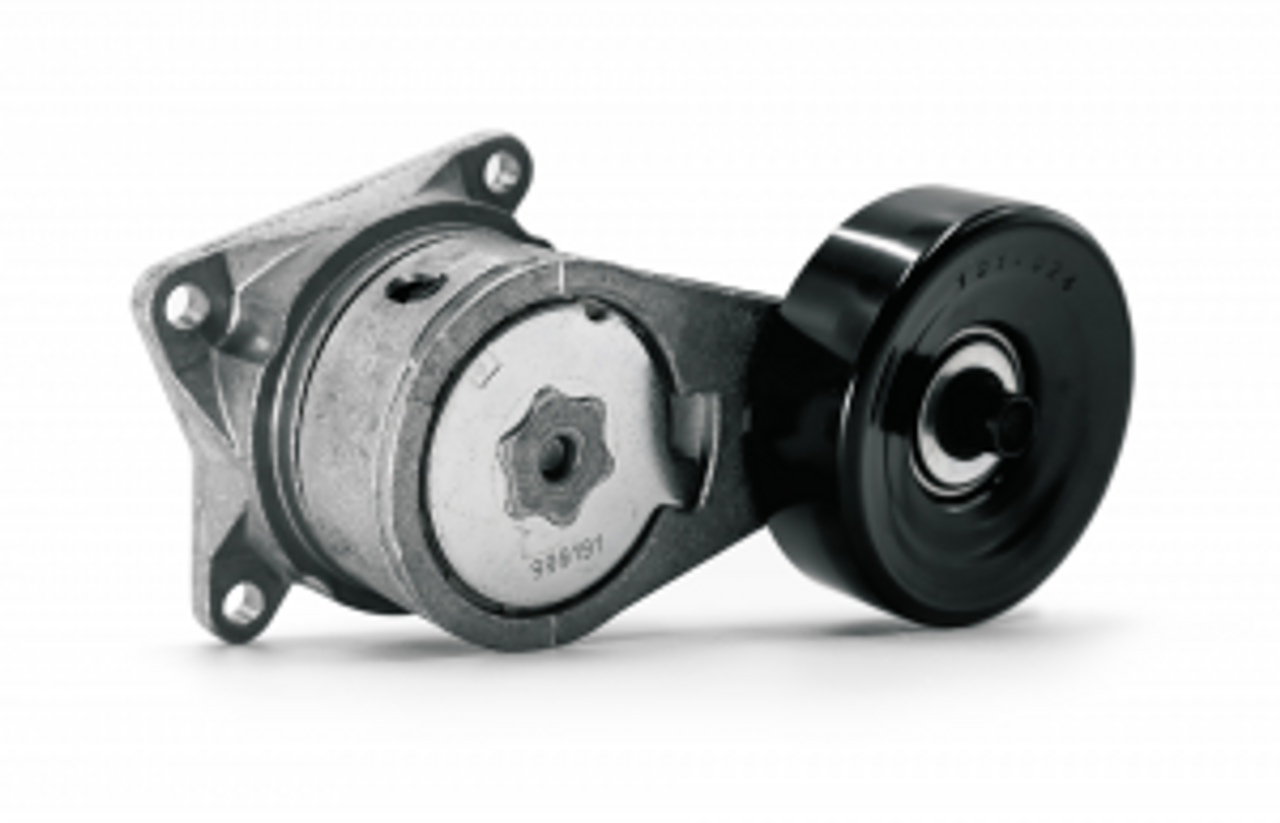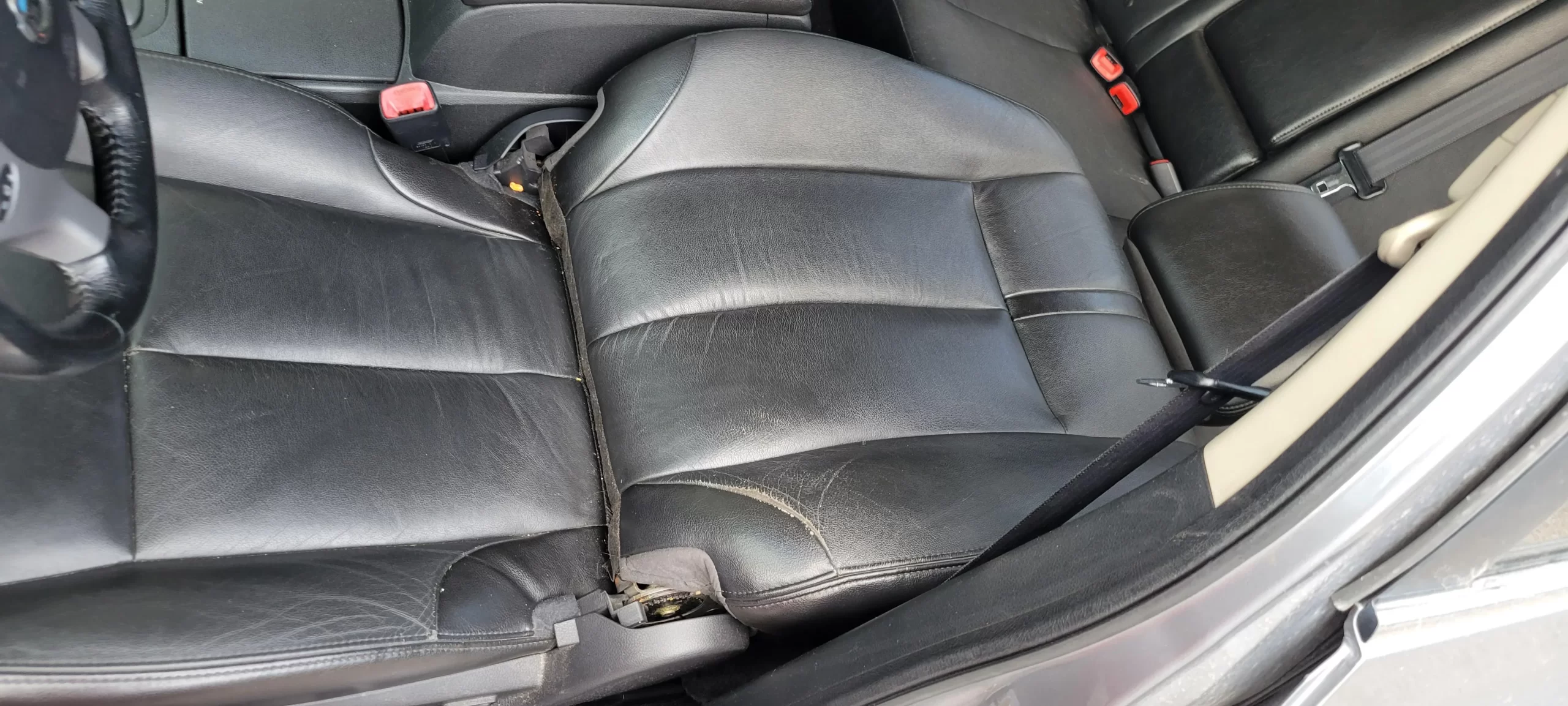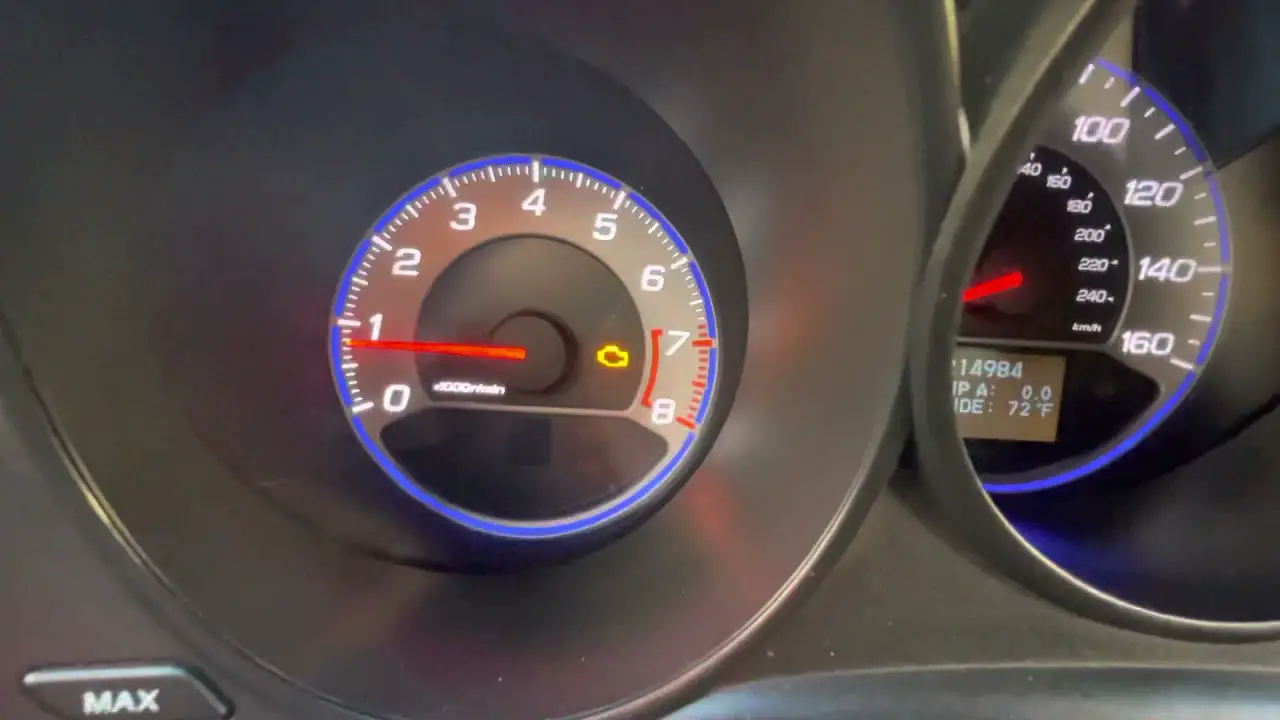Regarding the smooth operation of your vehicle’s engine, two critical components are vital: the serpentine belt and the serpentine belt tensioner. These unsung heroes ensure power is efficiently transmitted to various engine accessories, such as the alternator, air conditioning compressor, and power steering pump. This comprehensive guide will delve into the world of serpentine belt tensioners and the essential tools you need to keep your vehicle running smoothly.
The serpentine belt, also known as the accessory belt or fan belt, is a crucial part of your vehicle’s engine system. It snakes its way through various pulleys, transferring power to essential components. A serpentine belt tensioner is employed to maintain the proper tension in this belt. However, like all vehicle parts, tensioners can wear out over time, leading to many problems.
In this article, we will explore the symptoms of a failing serpentine belt tensioner, the cost of replacement, and even delve into specific models like the Mazda 3. Moreover, we’ll equip you with the knowledge to tackle these issues with the right tools, such as serpentine belt tool kits and more specialized options like Gear Wrench, AutoZone, and Harbor Freight.
So, whether you’re a seasoned DIY mechanic or a vehicle owner looking to understand your car’s inner workings, join us to uncover everything you need about serpentine belt tensioners and the tools that keep them in check.
What is a Serpentine Belt?

A serpentine belt, often called an accessory or fan belt, is a crucial component of a vehicle’s engine system. It’s named “serpentine” due to its winding path around various pulleys in the engine compartment. This belt is typically made of durable rubber with special grooves designed to grip the pulleys it travels across. Its primary function is to transfer power from the engine’s crankshaft to various auxiliary components, including the alternator, air conditioning compressor, power steering pump, and more.
In essence, the serpentine belt plays a pivotal role in ensuring that these accessories operate efficiently. Without it, these components would not receive the necessary mechanical power to perform their functions. So, it’s safe to say that the serpentine belt is the backbone of many critical engine functions.
The Role of Serpentine Belt Tensioners

Serpentine belt tensioners are the unsung heroes that maintain the proper tension in the serpentine belt. They are typically spring-loaded pulleys or assemblies that press against the belt to ensure it stays snug and secure on the various pulleys it travels around. Here’s why they are crucial:
- Proper Tension
The tensioner’s primary role is to ensure that the serpentine belt is neither too loose nor too tight. Proper tension is critical for efficient power transfer and to prevent slipping, which can lead to a loss of power to important engine accessories.
- Minimizing Wear
By keeping the belt at the correct tension, the tensioner helps reduce wear and tear on both the belt and the pulleys it drives. This prolongs the lifespan of these components.
- Reduces Noise
A well-functioning tensioner helps reduce noise in the engine compartment by preventing belt slippage or excessive vibration.
- Optimizes Fuel Efficiency
When the serpentine belt operates smoothly, it contributes to better fuel efficiency as the engine accessories work more efficiently.
- Enhances Engine Performance
Properly tensioned belts ensure that engine accessories, like the alternator and power steering pump, perform optimally, which is essential for the overall performance of the vehicle.
Bad Serpentine Belt Tensioner Symptoms

Now that we’ve established the importance of serpentine belt tensioners, it’s crucial to be aware of the signs that indicate a failing or bad tensioner. Recognizing these symptoms can save you from costly engine repairs and breakdowns:
- Squealing Noises
A common early sign of a bad tensioner is a high-pitched squealing noise coming from the engine compartment. This noise usually occurs when the belt slips due to inadequate tension.
- Visible Wear
Inspect the serpentine belt for signs of wear, such as cracks, fraying, or glazing. If you notice these issues, it may indicate a problem with the tensioner.
- Accessory Failure
If your vehicle’s accessories like the alternator, power steering, or air conditioning start to function erratically or fail altogether, it could be due to a malfunctioning tensioner.
- Excessive Belt Movement
A failing tensioner may allow the serpentine belt to move excessively, which can lead to misalignment and inefficient accessory operation.
- Overheating
If the engine begins to overheat, it may be linked to a malfunctioning tensioner, as it can lead to the water pump not operating correctly.
Serpentine Belt Tool Kit

A serpentine belt tool kit is an indispensable set of tools designed specifically for working on serpentine belts. Whether you’re a professional mechanic or a DIY enthusiast, this kit is essential for performing tasks like replacing, adjusting, or inspecting serpentine belts. Here’s why it’s so crucial:
- Versatility
A serpentine belt tool kit typically includes a variety of tools and attachments that can be used with different vehicle makes and models. This versatility is essential because serpentine belt designs can vary significantly.
- Saves Time and Effort
These tools are designed to make the job easier and more efficient. They allow you to access tight spaces and apply the right amount of force to release tension on the belt.
- Minimizes Potential Damage
Using the correct tools minimizes the risk of damaging the belt or other engine components during replacement or adjustment.
Components typically found in a serpentine belt tool kit may include:

- Tensioner Wrench
A specially designed wrench that fits onto the tensioner pulley, allowing you to rotate it and release tension on the belt.
- Socket Attachments
Various socket attachments that fit different sizes of tensioner pulley bolts.
- Extension Bars
These help you reach tensioner pulleys that may be deep within the engine compartment.
- Handles
Handles or bars for applying leverage to release tension and manipulate the belt.
- Belt Hooks
Useful for safely removing and installing the belt without damaging it.
Types of Serpentine Belt Tools
There are several types of serpentine belt tools available in the market, each with its unique features and benefits. Here are a few popular options:
- GearWrench Serpentine Belt Tool
GearWrench offers a comprehensive kit that includes a variety of sockets, extension bars, and a handle. Their tools are known for their durability and ease of use.
- AutoZone Serpentine Belt Tool
AutoZone provides a range of serpentine belt tools, often available for rent or purchase. Their tools are typically designed to be user-friendly and cost-effective.
- Harbor Freight Serpentine Belt Tool
Harbor Freight offers budget-friendly options for those on a tight budget. Their tools are adequate for occasional use but may not be as durable as higher-end alternatives.
Each of these options serves the same fundamental purpose: to make working on serpentine belts more accessible and efficient. When choosing a tool, consider your specific needs, frequency of use, and budget.
How to Use a Serpentine Belt Tool
Using a serpentine belt tool requires precision and safety precautions. Here’s a step-by-step guide on how to use one:
- Safety First: Ensure the engine is off and cool before starting any work. Disconnect the battery to avoid accidental starts.
- Locate the Tensioner: Identify the serpentine belt tensioner pulley. Refer to your vehicle’s manual or a diagram if needed.
- Choose the Right Attachment: Select the appropriate socket attachment from your tool kit that matches the tensioner pulley bolt size.
- Attach the Tool: Securely attach the socket to the wrench or handle, ensuring it’s firmly in place.
- Position the Tool: Insert the tool onto the tensioner pulley bolt and apply steady pressure in the direction that releases tension. This will loosen the belt.
- Remove the Belt: While keeping tension off the belt, slide it off one of the pulleys. Be sure to remember the belt’s routing path for reinstallation.
- Replace or Adjust: Complete your desired task, whether it’s replacing the belt, inspecting it for wear, or adjusting its position.
- Reinstall the Belt: Following the correct routing path, slide the belt back onto the pulleys.
- Release the Tensioner: Slowly release the tensioner tool, allowing it to return to its normal position, which will tighten the belt.
- Double-Check: Ensure the belt is correctly seated on all pulleys and grooves.
- Reconnect the Battery: If you disconnected it earlier, reconnect the vehicle’s battery.
- Start the Engine: Start the engine and observe the belt for any irregularities, such as noise or slipping. If everything looks and sounds normal, you’ve successfully used the serpentine belt tool.
Serpentine Belt Tensioner Replacement Cost
The cost of replacing a serpentine belt tensioner can vary significantly based on several factors:
- Vehicle Make and Model
Different vehicles have different designs for their serpentine belt tensioners, and some may be more accessible than others. This can affect the labor required for replacement.
- Labor Costs
Labor costs vary depending on where you get the work done. Dealerships and auto repair shops often have higher labor rates than independent mechanics or DIY.
- Parts Quality
The quality and brand of the tensioner you choose can impact the cost. Higher-quality tensioners may be more expensive but offer better durability.
- Additional Components
Depending on the condition of your serpentine belt or other related components, you may need to replace them simultaneously, adding to the overall cost.
- Geographic Location
Labor rates and parts prices can vary by location. Urban areas often have higher labor costs than rural areas.
As a rough estimate, replacing a serpentine belt tensioner can range from $100 to $250, including parts and labor. However, this general estimate can vary widely based on the abovementioned factors.
It’s worth noting that if you have the necessary tools and mechanical skills, you can save on labor costs by replacing the tensioner. Just ensure you purchase a high-quality replacement part.
Mazda 3 Serpentine Belt Tensioner
Mazda 3 vehicles have their unique characteristics when it comes to serpentine belt tensioners:
- Location
The tensioner in Mazda 3 vehicles is typically located on the front of the engine, making it relatively accessible for replacement compared to some other car models.
- Belt Routing
Ensure you carefully note the belt routing before removing it, as Mazda 3 models may have specific routing paths.
- Replacement Parts
Consider using OEM (Original Equipment Manufacturer) or high-quality aftermarket tensioners when replacing the part. This ensures reliability and compatibility.
- Tensioner Bolts
Pay attention to the tensioner mounting bolts, as they may vary in size and design. Be prepared with the correct tools to remove and replace these bolts.
Always refer to your Mazda 3’s specific service manual or consult with a qualified mechanic for any model-specific details or considerations.
How to Replace a Serpentine Belt Tensioner

Replacing a serpentine belt tensioner involves the following steps:
- Note: Before starting, ensure the engine is off, and the battery is disconnected for safety.
- Locate the Tensioner: Identify the serpentine belt tensioner in your vehicle’s engine compartment. It’s usually a pulley connected to an arm with a mounting bolt.
- Release Belt Tension: Using your serpentine belt tool (as discussed in Section 2), rotate the tensioner counterclockwise to release tension on the belt. Slide the belt off one of the pulleys.
- Remove the Tensioner: Carefully remove the mounting bolt securing the tensioner to the engine block. Keep track of any other bolts or components attached to the tensioner.
- Install the New Tensioner: Align the new tensioner in the same position as the old one. Insert and tighten the mounting bolt(s) securely.
- Reinstall the Belt: Slide the serpentine belt back onto all the pulleys, following the correct routing path as per your vehicle’s diagram.
- Tighten the Tensioner: Use your serpentine belt tool again to rotate the tensioner counterclockwise. Slide the belt onto the last pulley and slowly release the tensioner, allowing it to apply tension to the belt.
- Inspect and Test: Carefully inspect the belt to ensure it’s properly seated on all pulleys and grooves. Reconnect the battery and start the engine to check for any irregularities or unusual noises.
- Final Check: Double-check all components and connections to ensure they are secure and properly tightened.
Removing a Serpentine Belt Without a Tool

While a dedicated serpentine belt tool is recommended, alternative ways exist to remove a serpentine belt without one. However, these methods can be more challenging and carry certain risks:
Method 1: Using a Breaker Bar or Long Wrench
- Locate the tensioner pulley and its mounting bolt.
- Place a breaker bar or a long wrench on the tensioner pulley’s mounting bolt.
- Apply steady, controlled force counterclockwise to release tension on the belt.
- Slide the belt off one of the pulleys while maintaining tension on the breaker bar or wrench.
- Slowly release the tensioner and remove the belt from the remaining pulleys.
Method 2: Using a Socket and Ratchet
- Attach a socket and ratchet to the tensioner pulley’s mounting bolt.
- Apply counterclockwise force to release tension on the belt.
- Slide the belt off one of the pulleys while maintaining tension with the ratchet.
- Gradually release the tensioner and remove the belt from the other pulleys.
Challenges and Risks:
- These methods require significant physical effort to release tension, making them challenging for some individuals.
- There is a risk of sudden release when the belt slips off, potentially causing injury or damage.
- Without the proper tools, it can be difficult to apply the necessary leverage to release tension evenly.
Feel free to also read this: Fuel Tank Pressure Sensor
Serpentine Belt vs. Timing Belt
Serpentine Belt
Function: The serpentine belt is responsible for driving various engine accessories, such as the alternator, air conditioning compressor, power steering pump, and water pump. It provides power to these components, enabling them to operate.
Maintenance: Serpentine belts require periodic inspection for wear and should be replaced when they show signs of damage or when recommended by the vehicle manufacturer. Replacing a serpentine belt is a relatively straightforward task.
Timing Belt
Function: The timing belt, also known as the camshaft belt, synchronizes the movement of the engine’s camshaft and crankshaft. It ensures that the engine’s valves open and close at the correct times, maintaining proper engine timing.
Maintenance: Timing belts have a specific replacement interval, usually measured in miles or years, depending on the vehicle’s make and model. Replacing a timing belt is a more complex and critical maintenance task, as failure can lead to severe engine damage.
Key Distinctions
- While both belts play essential roles in the engine, the serpentine belt powers accessories, while the timing belt controls engine timing.
- Serpentine belts are visible from the engine compartment and have a relatively short replacement interval compared to timing belts.
- Timing belts are typically located behind covers and require more involved labor to replace. Failure to replace a timing belt on time can lead to catastrophic engine failure.
Serpentine Belt Diagram

Conclusion
Serpentine belt tensioners and the tools are used in maintaining them play a critical role in the health and performance of a vehicle’s engine. These components ensure the proper tension of the serpentine belt, which, in turn, powers essential engine accessories like the alternator, power steering pump, and more. Here are the key takeaways:
- Vital Engine Components: Serpentine belt tensioners and belts are the unsung heroes that enable the seamless operation of engine accessories, making them indispensable for your vehicle’s functionality.
- Maintenance Matters: Regular inspection and maintenance of serpentine belt tensioners and belts are essential. Early detection of issues and timely replacement can prevent costly repairs down the road.
- Proper Tools: Using the right tools, such as serpentine belt tool kits, makes maintenance and replacement tasks more manageable, efficient, and safe. These kits offer versatility and ease of use, making DIY maintenance accessible to vehicle owners.
By understanding the significance of serpentine belt tensioners, performing routine inspections, and utilizing the available tools and kits, you can ensure that your vehicle’s engine operates smoothly, efficiently, and reliably. In doing so, you not only extend the lifespan of your vehicle but also minimize the risk of unexpected breakdowns and expensive repairs. So, take care of your serpentine belt tensioner, and it will take care of your vehicle’s engine.




